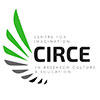By Gillian Judson, Simon Fraser University Faculty of Education and Meaghan Dougherty, Douglas College faculty in the Department of Child and Youth Care
True leadership springs from the courage to envision new possibilities and the steadfastness to turn them into realities.
-Dr. Soraya Sablo Sutton*
Why imagination?
About six years ago, we began to research imagination and its role in the context of leadership. Soon after beginning this work, we felt uncomfortable. We recognize the highly complex and volatile nature of educational leadership today; in a world rife with social and ecological injustice, people turn to education for solutions. We, like many others, acknowledge the need to radically change a system that does not support all learners and that has explicitly and implicitly led to ecological crises. Alarmingly, we noticed that increasing calls to “re-imagine” schools and to “envision new possibilities” for education are not matched with practical support for doing so. Digging deeper, we learned that imagination is widely misunderstood and largely neglected in leadership practice and leadership training (Judson, 2020, 2023). So, even if tools for cultivating imagination were widely understood, few leaders would consider it worthwhile to learn to use them. This is a problem. As leader and scholar Dr. George Theoharis notes, “Imagination in leadership isn’t optional; it’s essential for confronting the equity and justice issues in our schools head-on.” As is often the case for action, our own discomfort became our motivation to address this gap in leadership theory and practice.
To address misunderstanding around imagination’s roles in leadership, trouble the misconception that imagination is optional in leadership, and to provide practical support for cultivating this vital capacity, we have worked to amplify the voices, research, and practice of leaders. In 2023 we published a book entitled Cultivating Imagination in Leadership: Transforming Schools and Communities (Teachers College Press) in which 22 leaders explicitly discuss how imagination contributes to their leadership practices. A theme emerging from that work was the role of imagination in leading for social and ecological justice. This is the focus of a SSHRC-funded knowledge dissemination project entitled Cultivating Imagination: Leading for a Just Future (www.cultivateimagination.ca) in which another twenty practicing leaders and leadership researchers explicitly share why imagination is required in their work and what practical tools they use in their communities to cultivate it.
Tools That Cultivate Imagination
What is unique about this work is that it illuminates particular “cognitive tools” that cultivate imagination. For decades, imagination and cognitive tools have been explored in the context of pedagogy and an approach to teaching called Imaginative Education (see Egan 1997, 2005; Egan & Judson, 2015; Judson & Dougherty, 2023). Our leaders indicate how these tools that bring emotion, imagination and knowledge together help them in myriad ways. They allow leaders to connect with others and create shared meaning and ideas. They help to crack solidified ways of thinking and open up space for hope. In the Cultivating Imagination project, you’ll hear leaders speak of how they employ story and the story-form to engage and inspire, how the body is the originating source of imagination and meaning, how play-full practices and what if-ing open space for newness, how dissonating or tapping into a sense of rebellion help to illuminate untenable practices or policies, how focusing on metaphor can reveal hidden meaning, and how changing the context for thinking and learning can suddenly invite new perspectives. (Learn more about cognitive tools on the Resource page of the Cultivating Imagination project website: www.cultivateimagination.ca/resources/)

The leaders acknowledge how cultivating imagination is a way of being as a leader and is transformative. So, for example, rather than simply seeking to use story, vivid imagery or metaphor to “get people on board” for a new policy, storytelling and imagery-evocation is more profoundly a catalyst in community settings to co-create a shared vision and plans for action.
Three Learnings
- Imagination Thrives in Community. We are relational leadership scholars, so we acknowledge already the vital role of relationships within all leadership contexts. What we learned from this work is how collective voices are needed to move past what is to what could be. The systems we seek to change are, of course, the manifestations of a particular kind of imagination. As scholar and leader Sandeep Kaur Glover discusses, we value capital “I” imagination—the dominant story—when really, we need to amplify the small “i” imaginations of the many. In a world in which leaders face so many challenges and have so many responsibilities it can feel “impossible” to envision, let alone enact, a completely new way doing things. However, we know imagination is limited and so the way to un-learn and explore what is not yet, can only happen within brave spaces in which multiple ideas, voices, options, insights, and possibilities are shared. Imagination feeds on diversity. Imagination feeds on relationships between people and ideas. Community-based imagining, from the ground up, is where true change takes root.
- Imagination Makes Empathy Possible. Our leaders emphasized the crucial role of imagination in humanizing leadership (see also Judson & Dougherty, in press). As Dr. Andy Hargreaves put it, echoing the work of the late Dr. Maxine Greene, “Imagination bridges the gaps between us, allowing us to empathize and understand beyond our own lived experiences. It is essential for leaders to cultivate this to foster true inclusion”. We cultivate imagination and make empathy possible when we share our stories and our vulnerabilities and seek to truly listen to those of others. Dr. Myra Quadros, principal and leadership scholar, notes how storytelling supports empathy in community: “As leaders, sharing our own stories isn’t just about vulnerability. It’s a call to action for others to bring their full selves into the educational space”.
- Imagination Is A Privilege. In a world when leaders are always pressed for time, how can they possibly find time for imagination? According to former principal and scholar Dr. Lori Driussi, finding time to employ imagination is a way of doing things better; it is worth it. And if “time” is available, what kind of context or culture allows for courageous voices to suggest ways of doing and being in education that do not align with “the way we have always done it”? Our research has alerted us to the ways in which one’s positionality can either encourage or suppress imagination—racism, sexism, ageism all contribute to some leaders feeling less able to challenge the status quo without consequences. There is a great need to understand imagination if we are to make time. And to understand imagination so that time can be used in ways that do not simply tinker with an inequitable system but invite brave conversations for radical change.
Community is also vital for supporting leaders doing this work; it is hard to speak explicitly about imagination in a world in which it is frequently misunderstood as fanciful, childish, or untethered to reality. The culminating feature of the Cultivating Imagination project is a virtual roundtable to discuss how to enact imagination in leadership together. YOU are invited to attend! (July 10 at 10 AM PST. Find registration information at www.cultivateimagination.ca)
From So What to Now What
We urge readers to learn more about imagination and its importance for leadership and, especially, leadership for social and ecological justice. The truth is, we can’t create what we can’t imagine. All change is rooted in imagination. What does this mean for your work as a school leader? According to Dr. Rob Hopkins, we need to start with longing, to allow ourselves and our communities to imagine what we want—to long for a better world—and to fight for it together. Can we work together to understand, nurture, and collectively develop imagination in order to tackle the challenges we face in education?
References
Cultivating Imagination: Leading Toward A Just Future project webpage: www.cultivateimagination.ca
Egan, K. (1997). The educated mind: How cognitive tools shape our understanding. University of Chicago Press.
Egan, K. (2005). An imaginative approach to teaching. Jossey-Bass.
Egan, K. & Judson, G. (2015). Imagination and the engaged learner: Cognitive tools for the classroom. Teachers College Press.
Judson, G. & Dougherty, M. (Eds.) (2023). Cultivating imagination in leadership: Transforming schools and communities. Teachers College Press.
Judson, G. & Dougherty, M. (accepted). Relational leadership and the humanizing power of imagination. International. Journal of Leadership in Learning.
*All quotes retrieved from podcasts in the Cultivating Imagination: Leading Toward A Just Future project (https://cultivateimagination.ca/podcast/)
Hear more from our leaders in the Cultivating Imagination podcast series.


